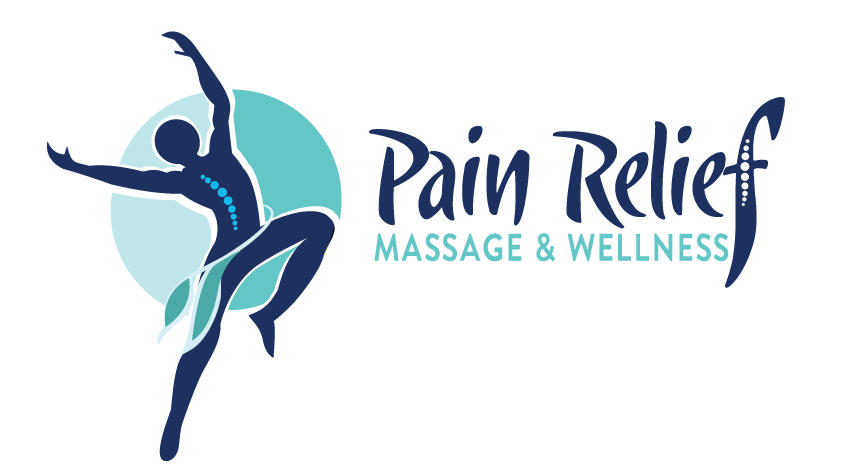The picture above is a prime example with what happens when you are experiencing carpal tunnel pain. The median nerve that communicates with the rest of the hand is squeezed at the wrist by inflamed tendons & tissues which can cause numbness & pain. Left untreated, this condition can cause permanent nerve damage if ignored long enough. Fortunately this condition can be treated and full functionality can be restored without the use of surgery (if treated before any nerve damage occurs).
Carpal tunnel syndrome doesn't generally happen overnight. It gradually builds overtime with symptoms occurring in the thumb, index, and middle fingers that comes and goes. As it gets worse, the numbness or discomfort will spread to the other fingers (except for the pinky) and the pain/numbness may also spread up the arm. Weakness and the tendency to drop things are also symptoms of carpal tunnel. Those who suffer from this condition generally "shake out" their hands in order to get normal feeling back into their hands. As this condition gets worse, the numb feeling can become constant all the time.
Who are the most at risk of getting carpal tunnel? Any profession that can cause compression to the median nerve (generally through to much repetition). Professions that involve long hours at the computer, serving/waitressing, therapists who do a lot of manual manipulation (massage therapists) are examples of higher risk of getting carpal tunnel. Women also have a higher risk because anatomically speaking, they have smaller carpal tunnels than men (easier to get compressed).
What can massage therapy do for Carpal tunnel? Well if caught in time (no nerve damage or not in constant discomfort) massage can be an effective tool to getting the hand back to full functionality without intervention from surgery. Studies have shown that massage is very effective at treating symptoms of carpal tunnel. You can read an abstract from one such study by clicking HERE. If at all possible, surgery should be the very last consideration for treatment of carpal tunnel. I've worked on clients that have had 5+ surgeries on the same hand for carpal tunnel, and you never know if there will be long lasting side effects from these surgeries.
In my practice, I've successfully treated dozens of people that had carpal tunnel symptoms. I would use trigger point & myofascial techniques along with active/resistive stretching to free up the pinched nerve. Sometimes I use a more aggressive muscle stripping technique in the forearms to loosen up tight attachments at the wrist. The severity of carpal tunnel symptoms will determine how many massage sessions will be needed to help. Sometimes massage helps greatly with just one session, sometimes more is needed to get back to full functionality of the hand.
So what is..........
Thoracic Outlet Syndrome?
Why doesn't this condition have its own page? Many of times when I see clients complaining of carpal tunnel syndrome, the symptoms they are actually experiencing is from too much compression of the nerve bundle in their thoracic outlet. Where is that located? The thoracic outlet is the area in between the collarbone and first rib.
That nerve bundle passes between the scalene muscles of the neck, under the collar bone, then under the pectoralis muscles. When there is compression to any one of these areas, there can be pain or numbness into the arm and hand (comparable to carpal tunnel). Grip strength may also be weakened as well. Other symptoms include neck & shoulder pain.
Who is at a higher risk of getting TOS? Poor posture is one of the causes. Computer heavy jobs generally suffer from this with droopy arms and head in a forward position. Anything in repetition over a long period of time can cause TOS symptoms. Athletes such as baseball players or swimmers can develop symptoms after years of repetitive movements. Anyone who has experienced physical trauma to that area can also have symptoms.
How do we go about treating this condition? Conservative approaches generally work best. Most doctors will recommend physical therapy to treat this condition. So what can massage do? I would do light stretching and myofascial release along the scalene muscles of the neck (which many PT's would do along with stretches & exercises). Deep tissue & trigger point therapy would be used along the pectoralis muscle to loosen compression at the thoracic outlet. I've seen a lot of success in relieving these symptoms after performing massage for TOS. Generally 1-3 massage sessions can bring a lot of pain relief to this affected area.
So are you experiencing any tingling, numbness, or discomfort in the hand? If you are experiencing any symptoms of carpal tunnel syndrome or thoracic outlet syndrome, you should really give massage a try. These conditions are easy to treat without the intervention of surgery. Easy online scheduling HERE.



